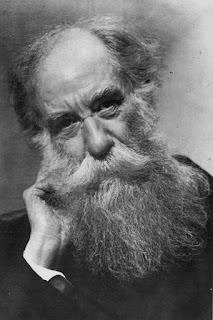Composer: Charles Koechlin; Maurice Emmanuel
- Emmanuel - Sonata for Clarinet, Flute and Piano, Op. 11
- Koechlin - Flute Sonata, Op. 52
- Koechlin - Clarinet Sonata No. 1, Op. 85
- Koechlin - Clarinet Sonata No. 2, Op. 86
- Koechlin - Sonatine modale for Flute and Clarinet, Op. 155a
- Koechlin - Three pieces for Clarinet and Piano, Op. 178
- Koechlin - Pastorale, Op. 75bis for Flute, Clarinet and Piano
Markus Brönnimann, flute
Jean-Philippe Vivier, clarinet
Michael Kleiser, piano
Date: 2013
Label: Brilliant Classics
----------------------------------------------------------------------------
I’m not sure whether or not this 2003 recording has been released before – there is certainly no licence information in the documentation. With the exception of Maurice Emmanuel’s entrancing 1907 Sonata for clarinet, flute and piano, it’s devoted to the music of Charles Koechlin.
Emmanuel’s Sonata is a rare survivor, one of only thirty or so works that the ultra-self-critical composer didn’t destroy. What’s most admirable here is the spirited lyricism of the writing, vitality without any gauze or recourse to bogus impressionism. Instead, Emmanuel prefers his evocation to be more direct, and the warm slow movement with its tremolo for clarinet and flute and – just as much – the deft finale, are all joyously forthright. The little piping irregularities here, avian and athletic, may owe something to Emmanuel’s immersion in Greek metre. It certainly helps to keep the music on the go, constantly wrong-footing the listener and providing great opportunities for spirited chamber interplay. These are duly taken by the fine trio though I wish the recording in the Villa Louvigny in Luxembourg had been more atmospheric, and less clinical.
Koechlin’s 1911-13 Flute Sonata is a work bathed in antiquity, specifically Greek – an enthusiasm he shared with Emmanuel - in its evocation of unhurried Mediterranean sun-calm. It’s an eclogue in music, with a Fauréan Sicilienne as its central movement – loose in form but beautiful in melodic appeal – and a Fauns and Dryads finale. This, the most complex of the three movements, has the most contrasts and is the most playfully dynamic. The two Clarinet Sonatas date from a decade later when Koechlin was simplifying his style, thinning out his more exuberant gestures, preferring instead a concentration on counterpoint. The first sonata was unaccountably overlooked until performance as late as 1982. It’s a concise, spare work revealing traces of the neo-baroque whereas the companion second sonata is a more overtly lyrical work, and much less stark. Here Koechlin’s appropriation of baroque procedure is put to more robust and confident ends.
The following decade saw his Sonatine modale for flute and clarinet, couched in clear church modes, highly refined and brief. In 1942 he added to his chamber music portfolio with the Three Pieces from Op.178, for clarinet and piano, about which the notes are silent. This is a very late work, once again contrapuntally-inclined, lyric, concise and free of artifice. It’s Robert Orledge who completed the brief Pastorale from the composer’s manuscript. It’s the first movement of an incomplete trio for flute, clarinet and piano written between 1917 and 1921
With the caveat regarding the recorded sound, it’s good to note the fine performances and the welcome repertoire.
-- Jonathan Woolf, MusicWeb International
----------------------------------------------------------------------------
Charles Koechlin (27 November 1867 – 31 December 1950) was a French composer, teacher and writer on music. Koechlin was enormously prolific. He was highly eclectic in inspiration and musical technique, and his music was distinct from his contemporaries. He was a passionate enthusiast for such diverse things as medieval music, The Jungle Book of Rudyard Kipling, Johann Sebastian Bach, film stars (especially Lilian Harvey and Ginger Rogers), traveling, stereoscopic photography and socialism. Despite his lack of worldly success, Koechlin was apparently a loved and venerated figure in French music.
http://en.wikipedia.org/wiki/Charles_Koechlin
http://en.wikipedia.org/wiki/Charles_Koechlin
***
Maurice Emmanuel (2 May 1862 – 14 December 1938) was a French composer of classical music. He studied with Léo Delibes, Théodore Dubois and Ernest Guiraud, among others, at the Paris Conservatoire. He was appointed professor of the history of music at the Conservatoire in 1909, and taught there until 1936. His students included Robert Casadesus, Yvonne Lefébure, Georges Migot, Jacques Chailley, Olivier Messiaen and Henri Dutilleux. Emmanuel's compositions include operas after Aeschylus, as well as symphonies, string quartets, and six sonatines for solo piano. He destroyed all but 30 works he composed.
----------------------------------------------------------------------------
FLAC, tracks
Links in comment
Enjoy!



Choose one link, copy and paste it to your browser's address bar, wait a few seconds (you may need to click 'Continue' first), then click 'Skip Ad' (or 'Get link').
ReplyDeleteIf you are asked to download or install anything, IGNORE, only download from file hosting site (mega.nz).
If MEGA shows 'Bandwidth Limit Exceeded' message, try to create a free account.
http://lyksoomu.com/umF2
or
https://uii.io/RbyFap
or
https://exe.io/2EDCgU